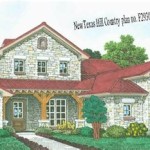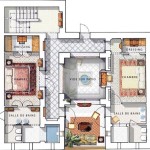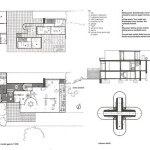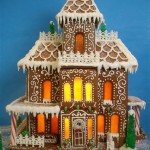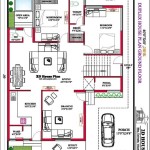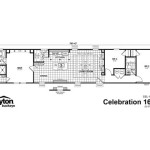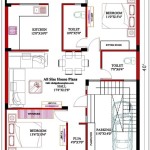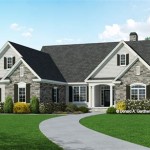Mid-Century Modern Home House Plans: A Timeless Design Philosophy
Mid-Century Modern (MCM) architectural design, a style that flourished roughly from the mid-1940s to the 1960s, continues to captivate homeowners and architects alike. Characterized by clean lines, minimalist aesthetics, and a focus on functionality, MCM house plans represent a distinct departure from earlier architectural styles. Understanding the core principles and design elements of this style is crucial for appreciating its enduring appeal and successfully incorporating it into contemporary home designs.
The post-World War II era fostered a desire for modernism and a rejection of ornamentation. Advances in technology and new building materials also played a significant role in shaping the MCM aesthetic. Architects sought to create homes that were efficient, affordable, and aesthetically pleasing, reflecting the optimism and progress of the time. This resulted in a design philosophy that emphasized open floor plans, large windows, and a seamless integration of indoor and outdoor spaces.
Key Principle 1: Open Floor Plans and Natural Light
One of the hallmarks of MCM house plans is the emphasis on open floor plans. Walls are minimized to create a sense of spaciousness and flow throughout the living areas. This design approach fosters social interaction and allows natural light to permeate the entire home. Living rooms, dining areas, and kitchens often merge together, creating a cohesive and functional space for modern living.
Large windows are another defining characteristic of MCM architecture. These windows, often floor-to-ceiling, maximize natural light and offer unobstructed views of the surrounding landscape. The abundance of natural light contributes to a bright and airy atmosphere, enhancing the overall livability of the home. Clerestory windows, strategically placed high on walls, are also commonly used to bring in additional light while maintaining privacy.
In traditional homes, rooms were often segmented and defined by specific functions. MCM design challenged this convention by blurring the lines between different areas of the home. This open and flexible layout allows homeowners to adapt the space to their changing needs and lifestyles. Furnishings and decor are carefully selected to complement the open floor plan and create a harmonious balance throughout the living spaces.
The open floor plan is more than just a design aesthetic; it reflects a shift in how people live and interact within their homes. It encourages a more casual and informal lifestyle, fostering a sense of connection and togetherness among family members. This design principle remains highly desirable in contemporary architecture, as homeowners continue to seek spaces that are both functional and aesthetically pleasing.
Key Principle 2: Integration of Indoor and Outdoor Spaces
MCM house plans prioritize a seamless integration of indoor and outdoor spaces. This is achieved through the use of large windows, sliding glass doors, and outdoor living areas such as patios and decks. The goal is to create a harmonious connection between the home and its natural surroundings, blurring the boundaries between the interior and exterior environments.
The use of natural materials such as wood, stone, and brick further enhances the connection to the outdoors. These materials are often incorporated into both the interior and exterior of the home, creating a cohesive and organic aesthetic. Landscaping plays a crucial role in MCM design, with an emphasis on naturalistic elements such as native plants, gravel pathways, and rock formations.
Patios and decks are integral components of MCM house plans, providing outdoor living spaces for relaxation, entertaining, and dining. These areas are often designed as extensions of the interior living spaces, seamlessly connected through sliding glass doors or large windows. Outdoor fireplaces, built-in seating, and pergolas are common features that enhance the functionality and aesthetic appeal of these outdoor spaces.
The integration of indoor and outdoor spaces is not only visually appealing but also offers numerous practical benefits. It allows homeowners to enjoy the natural beauty of their surroundings, promotes a healthy lifestyle, and provides opportunities for outdoor recreation and relaxation. This design principle has become increasingly popular in contemporary architecture, as people seek to reconnect with nature and create homes that are both comfortable and sustainable.
Considerations are given to the placement of the home on the lot. Often, MCM homes are situated to maximize natural light and views, taking advantage of the site's unique features. Overhangs and awnings are sometimes used to provide shade and protect the interior from direct sunlight, while still allowing for ample natural light.
The connection to nature extends to the choice of materials. Siding options can include wood, brick, or a combination of both, often chosen to blend with the surrounding landscape. Rooflines are typically low-pitched and follow the natural contours of the land, further emphasizing the connection to the environment.
Key Principle 3: Clean Lines and Minimalist Aesthetics
Clean lines and a minimalist aesthetic are fundamental to MCM house plans. The focus is on simplicity, functionality, and the elimination of unnecessary ornamentation. Geometric shapes, such as rectangles and squares, are prevalent in the design, creating a sense of order and balance. This streamlined aesthetic reflects a modern sensibility and a rejection of overly decorative styles.
The use of natural materials contributes to the minimalist aesthetic by adding texture and warmth to the interior spaces. Wood is commonly used for flooring, cabinetry, and wall paneling, while stone and brick are incorporated into fireplaces and accent walls. These materials are often left exposed to showcase their natural beauty and create a sense of authenticity.
Color palettes in MCM homes typically consist of neutral tones such as white, gray, and beige, accented with pops of vibrant color. These colors are often inspired by nature, such as earthy greens, warm oranges, and vibrant blues. The use of color is carefully considered to create a harmonious and balanced interior environment.
Furniture and decor in MCM homes are carefully selected to complement the minimalist aesthetic. Pieces are typically simple, functional, and well-designed, avoiding unnecessary embellishments. Classic MCM furniture designs, such as Eames chairs and Saarinen tables, are often incorporated into the interior spaces, adding a touch of retro style and sophistication.
The minimalist aesthetic extends to the exterior of the home, with clean lines and simple geometric forms dominating the design. Landscaping is also kept minimal, with an emphasis on natural elements and the avoidance of overly manicured gardens. This creates a sense of harmony and balance between the home and its surrounding environment.
Ultimately, the clean lines and minimalist aesthetics of MCM house plans are about creating a sense of calm and order. By removing unnecessary clutter and focusing on essential elements, these homes offer a respite from the complexities of modern life. This design principle continues to resonate with homeowners today, as they seek spaces that are both beautiful and functional.
Beyond these core principles, several other design elements contribute to the overall MCM aesthetic. Rooflines are typically low-pitched, often with exposed beams. Carports are common features, reflecting the growing popularity of automobiles during the mid-century era. Interior design elements often include built-in furniture, such as shelving units and storage cabinets, which maximize space and functionality.
The enduring appeal of MCM house plans lies in their timeless design, functionality, and connection to nature. This style continues to inspire architects and homeowners alike, offering a unique blend of modernity and comfort. By understanding the key principles and design elements of MCM architecture, it is possible to create a home that is both aesthetically pleasing and perfectly suited to the demands of contemporary living. While specific design implementations vary widely based on geographical location and personal preferences, the underlying principles of open spaces, natural light, and seamless integration with the outdoors remain central to the style's definition.
When considering MCM house plans, it is essential to research local zoning regulations and building codes to ensure compliance. Consulting with an architect or designer experienced in MCM architecture can provide valuable insights and guidance throughout the design and construction process. The careful selection of materials, finishes, and furnishings is also crucial for achieving the desired aesthetic and creating a cohesive and harmonious living environment.

Designing A Mid Century Modern Home Part Ii Wildfire Interiors

Build A House With These Mid Century Modern Floor Plans Blog Eplans Com

Pin By Lynne White On Floor Plans Mid Century Modern House Craftsman Style

Build A House With These Mid Century Modern Floor Plans Blog Eplans Com

Mid Century Modern House Plans Houseplans Blog Com

Untitled Modern Floor Plans Mid Century House

Mid Century Modern House Plans Created By The Architects

Mid Century Modern House Plans For Pleasure Floor

Build A House With These Mid Century Modern Floor Plans Blog Eplans Com

House Plan 1 Bedrooms 5 Bathrooms 3297 Drummond Plans

